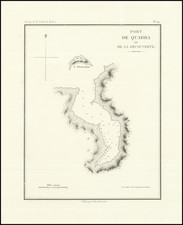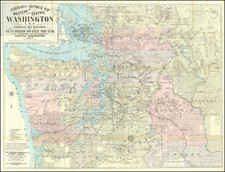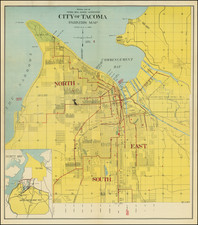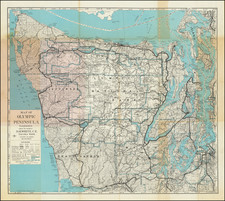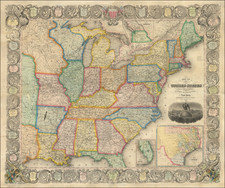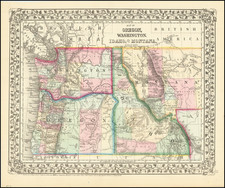A Fine Large Drawing By James F. Jones, Engineer & Superintendent for the Oregon Improvement Company
Large (9 feet long!) and finely executed schematic drawing of plans for mining equipment to be used at the Franklin Colliery.
The plan bears the stamp of the Oregon Improvement Company engineering office and is dated December 11, 1884, half a year after the company was reorganized under the leadership of Elijah Smith.
The Franklin Mine and the Oregon Improvement Company
Henry Villard launched the Oregon Improvement Company in October 1880 as part of his grand scheme to dominate the development of the Pacific Northwest. By 1883 he had tied the area to the national economy with the completion of the Northern Pacific Railroad.
To fuel Villard’s steamships and locomotives, a dependable coal supply was a high priority. By February 1881, the Oregon Improvement Company had acquired the Seattle Coal and Transportation Company, including the Newcastle Mine east of Lake Washington, at a cost of one million dollars. The Seattle and Walla Walla Railroad was also purchased for over half a million dollars to transport coal from mine to Seattle bunkers.
Villard also sponsored the Northern Transcontinental Survey, which was to determine the specific lands belonging to the railroads under the national land grants to locate any valuable assets on those lands, especially coal seams.
Between 1881 and 1884 engineers employed under the survey discovered the valuable coal deposits of the Green River area, including the famed McKay vein at Green River Gorge. One of the key challenges confronting the Oregon Improvement Company in exploiting the rich McKay vein on the Green River was accessibility. Howard proposed to build a 20-mile extension of the Columbia and Puget Sound Railroad from Renton Junction to reach the new site. In 1882, the so-called Cedar River Extension of the Columbia and Puget Sound was commenced and preliminary surveying and excavation work was under way at Green River Gorge.
Villard’s grand scheme collapsed at the end 1883 and the Oregon Improvement Company went receivership and reorganization. Elijah Smith emerged in April 1884 as president of the Oregon Improvement Company. Work on the Cedar River Extension came to a halt during the early months of 1884. Proposed financial support from such local agencies as the Seattle Chamber of Commerce and the newly formed Black Diamond Coal Company was not forthcoming. Howard, however, remained undaunted by the reversals of early 1884. He revived commitments from local interests as well as the company’s board of directors. With Chinese laborers hired at 80 cents per man per day, the Cedar River Extension was completed in early 1885. By June of that year the first shipment of Franklin coal arrived at the Seattle bunkers.
Franklin was a coal mining town established by the Oregon Improvement Company, located in east King County. The company town made up of immigrants mostly of Welch, English, Irish, Italian, and Scotch. The town was complete with school, saloons, hotel, black smith shop, and numerous company houses. In 1885 the Seattle to Walla Walla Railroad was extended to Franklin allowing coal to be shipped to San Francisco.
Coal from the region flowed for the company for the next decade. On August 24th of 1894 Franklin's place in history changed forever through disaster, when 37 miners were killed fighting an arsonist's fire in the Oregon Improvement Company's mine. At the time, it was the second worst mining disaster in Washington state history. Mining in the area continued until the company was sold to the Pacific Coast Company in 1896.











